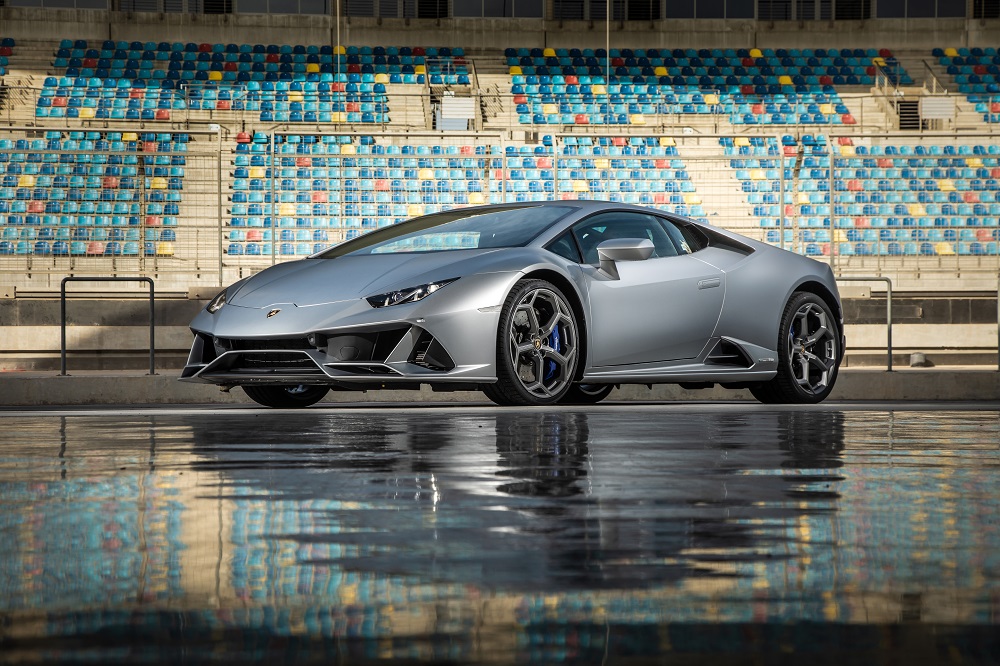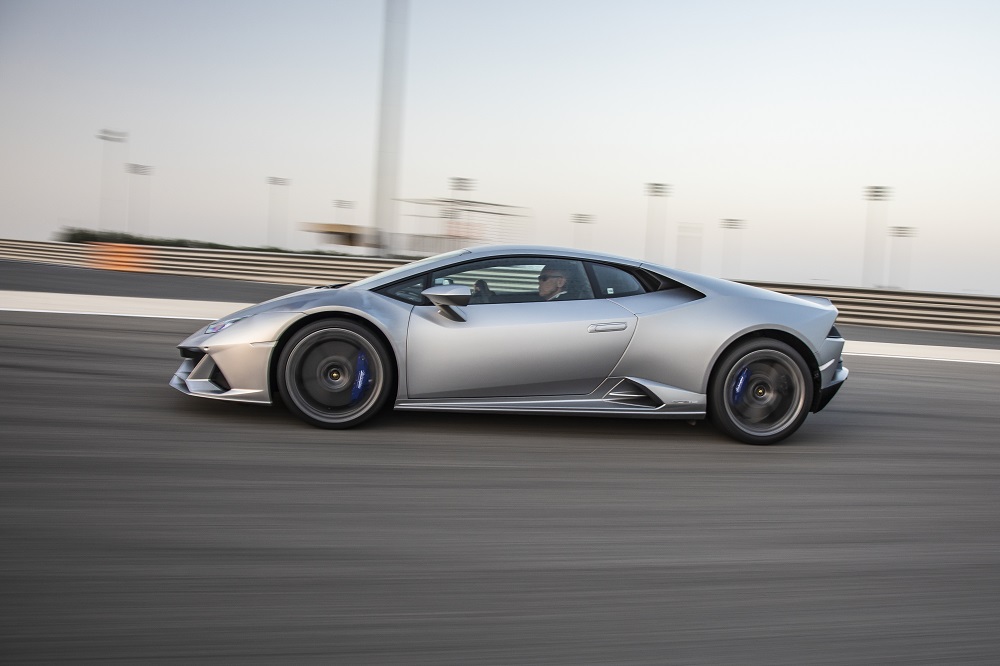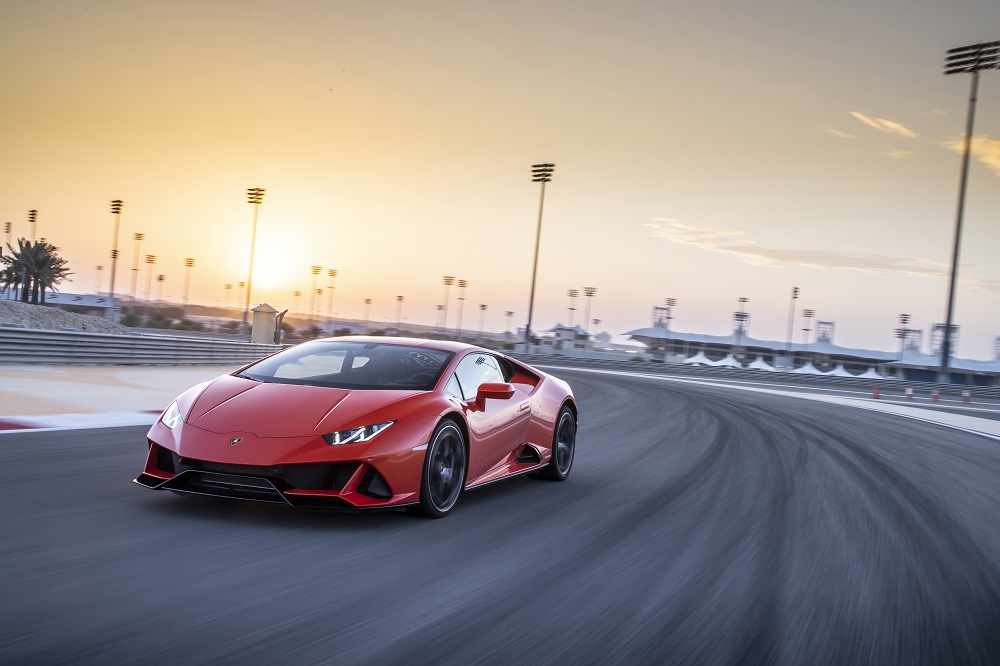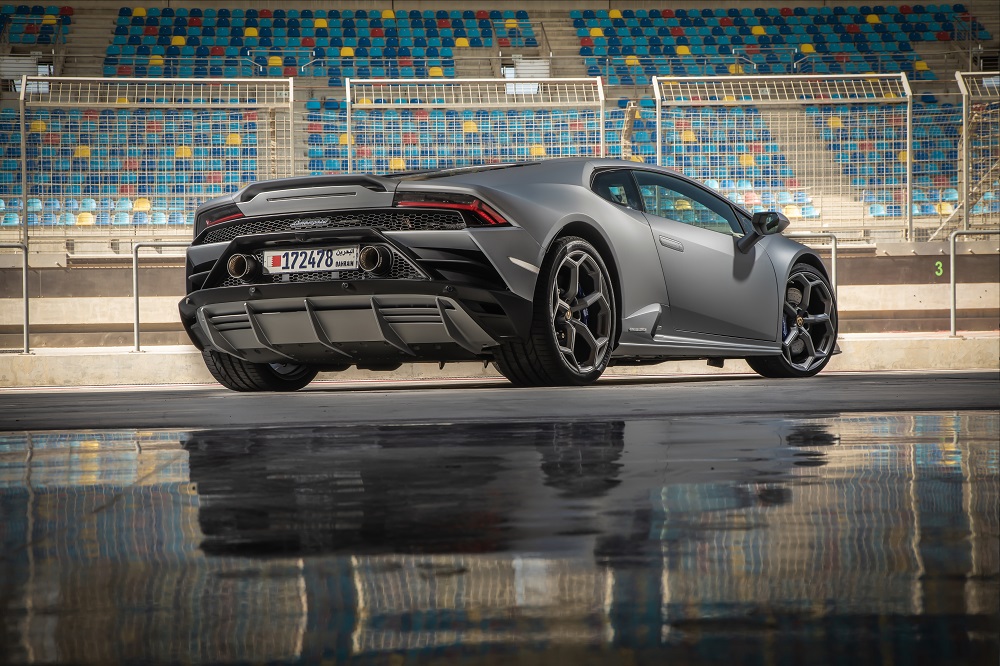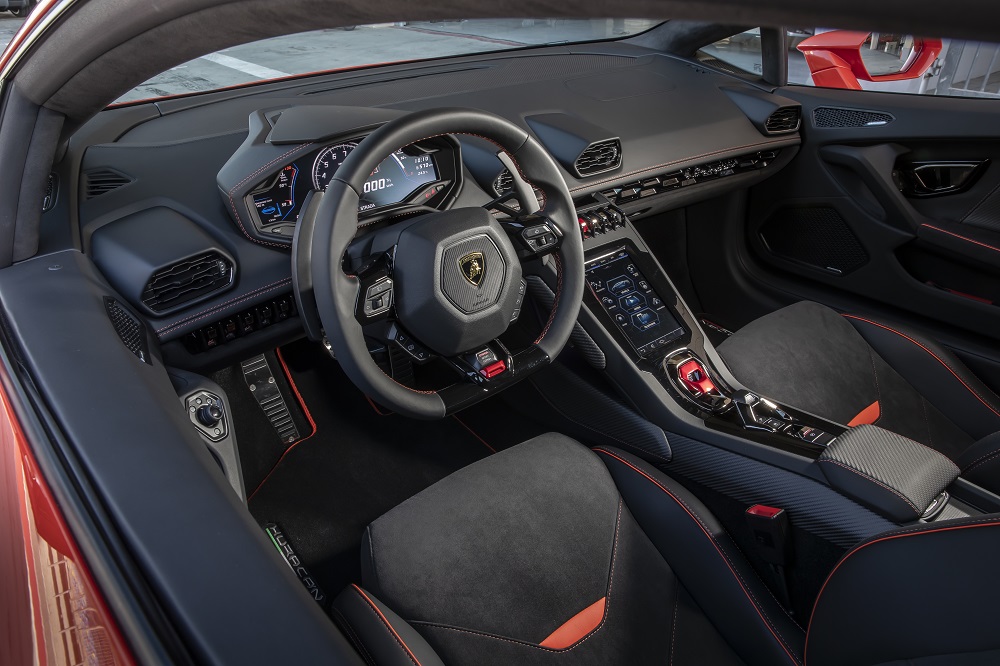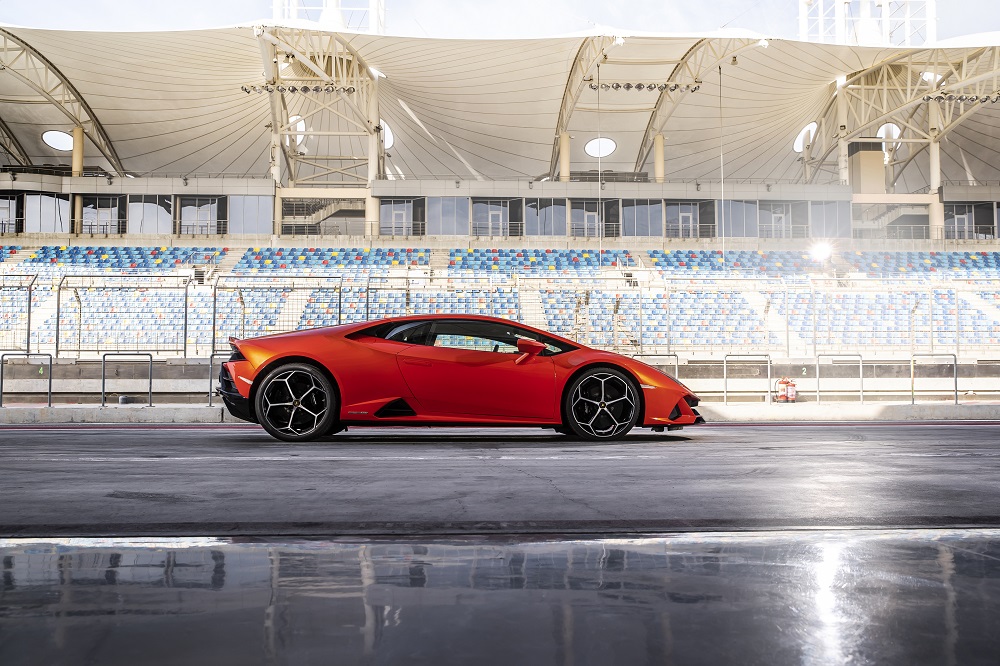Lamborghini Huracan EVO is a Great Place to (Re)start
New EVO model features a refreshed design, updated infotainment, advanced dynamics systems, and improved performance.
You can say so many things during a toast. You can make a joke, you can say how much you appreciate the people you’re raising your glass to, or you can wish them well with the phrase “May the best of your past be the worst of your future.” That seems to be the philosophy behind the Lamborghini Huracan EVO. The raging bull’s newest base model kicks off the second major phase in the Huracan’s timeline by combining the power of the Huracan Performante with more modern electronics and new vehicle dynamics systems.
Maxim went out to the Middle East to experience the Huracan EVO on the Bahrain International Circuit, home of Formula One’s Bahrain Grand Prix. The Huracan enters its next stage of life with a facelift, new wheel and color options, and a re-styled rear end with MotoGP-inspired exhaust outlets that jettison the 640-horsepower 5.2-liter V10’s glorious sound right above the diffuser.
That enhanced power plant is connected to a seven-speed dual-clutch transmission and all-wheel drive. That’s relatively standard fare for the Huracan, but the EVO sports some interesting performance enhancements that make it both smarter and more capable.
The second-generation version of the Lamborghini Piattaforma Inerziale (LPI) system measures the EVO’s roll, pitch, and yaw through an array of sensors and calculates its lateral, longitudinal, and vertical accelerations.
Engineers upgraded the Huracan’s Lamborghini Dynamic Steering (LDS) with rear-wheel steering that, depending on the speed the EVO is going, turns the back wheels in the same or opposite direction as the front wheels. By virtually lengthening or shortening the Huracan’s wheelbase, rear-wheel steering makes the EVO more stable at high speeds and more maneuverable at low speeds.
The Lamborghini Dinamica Veicolo Integrata (LDVI) system processes and adjusts to all of that and other data in 20 milliseconds. It also predicts what the driver will need next based on their inputs and external factors, such as the improved magnetorheological suspension and torque-vectoring all-wheel drive system, then sets up the EVO accordingly.
Those enhancements result in noticeably better handling through a slalom and figure 8 course. According to Maxim, the Huracan EVO “shined brightest in corners, ducking and weaving on S curves like a prize fighter. The combination of these systems — the rear-wheel steering and torque vectoring for cutting, the traction control and AWD for stability even in the harshest G forces — was electrifying.”
Despite being an all-wheel-drive car, the Huracan EVO is not afraid to wag its tail in curves. It’ll keep doing that smoothly and predictably as long as you keep your right foot down.
Inside, the Huracan EVO has been updated to offer more modern tech that Lamborghini thinks will appeal to younger buyers. The new 8.4-inch center touchscreen operates much like an iPhone and offers multi-finger gesture control and voice commands. In fact, it features Apple CarPlay with smartphone integration. It can also be used to control a variety of the EVO’s systems, such as HVAC and infotainment, and show the status of the LDVI system.
The EVO redefines the word “normal” for Lamborghini. It’s the brand’s new entry-level model with power and capabilities either once offered by a flagship variant of the Huracan or never available before. And it gives us plenty of reasons to believe that future high-performance versions of the Huracan are going to be absolutely extraordinary.
Photos courtesy of Lamborghini

